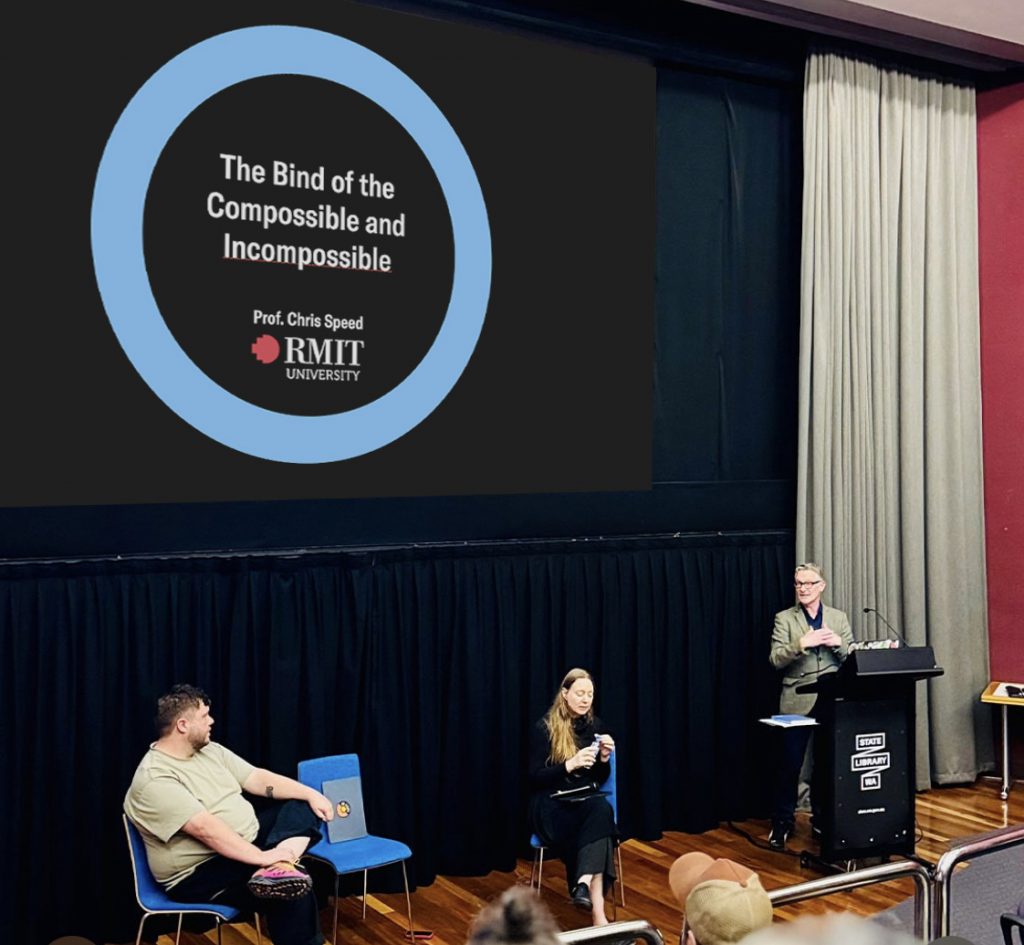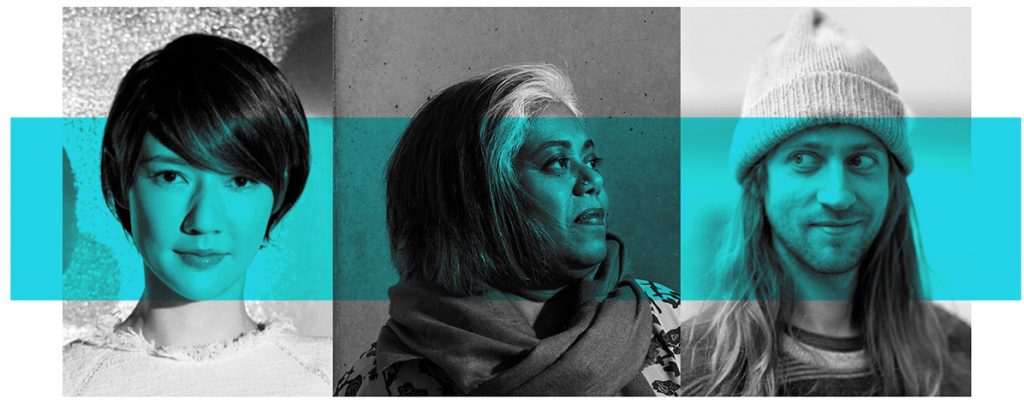Twittest
 The Twittest is a playful project for students about intelligence based on the use of the social network application Twitter and making reference to Alan Turing’s ‘Turing Test’. The competition, was developed by ourselves at the University of Edinburgh as part of the Edinburgh International Science Festival, and was created to mark the 100th birthday of Turing (see here for more details), who is widely regarded as the forefather of modern computing.
The Twittest is a playful project for students about intelligence based on the use of the social network application Twitter and making reference to Alan Turing’s ‘Turing Test’. The competition, was developed by ourselves at the University of Edinburgh as part of the Edinburgh International Science Festival, and was created to mark the 100th birthday of Turing (see here for more details), who is widely regarded as the forefather of modern computing.
The format is based on the Turing Test, which the scientist devised to show whether a computer can show sufficient intelligence to be mistaken for a human. It took this connection as a starting point for the project in the context of school education and the cultures of young people – testing how intelligence is perceived, transmitted and institutionalised in such contexts.
Twittest background
A characteristic of social networking systems such as Facebook or Twitter is the opportunity to post status updates, or tweets. These short ‘messages’ that are described by some as ‘micro-blogs’, are limited in length to 420 characters in Facebook and even less (140 characters) in Twitter. Posted to no-one in particular, and only visible to people in your network, the statements are an unusual form of communication because their do not demand a reply. Often posted just to indicate that someone is still present in a network, the short updates sometimes attract brief conversations, but are generally short statements about people’s activities and observations. These updates now constitute the primary activity of many social network platforms, but despite not actually constituting a discourse, they have become a habitual part of how young people sustain contact with each other.
Alan Turing’s 1950 paper ‘Computing Machinery And Intelligence’ introduced a twist in an established game of human imitation to see if an interrogator could spot whether someone was a person or computer whilst observing text-based communication between two participants. If someone could not reliably tell the machine from the human, the machine is said to have passed the ‘Turing test’. The test relied upon a model of interpersonal communication that involved the sustaining of dialogue to demonstrate whether the subjects, and in particular computers could think (Turing’s paper on the imitation game: http://www.loebner.net/Prizef/TuringArticle.html). If the Turing test asks whether machines can think, the project responds with artificial stupidity.
If one aspect of contemporary human communication is not based upon the need to hear a reply, the Twittest project asks how might the Turing Test be revisited in light of the ‘one-way’ form of micro-blogging that is used to sustain communication between friends? How can you tell whether you are receiving texts from a person or machine, from an intelligent machine or twit? If Twitter asks ‘what are you doing?’, the project asks: ‘what are you thinking, and are you thinking at all?’
Twittest project
As young people become familiar with posting status updates as a mode of communication, it seemed to us that it would be interesting to use it to inform a revised Turing Test that mixed bots, up with students, with celebrities and teachers, to provide an exploration of the levels of knowledge that are imparted in this way. Would anybody be able to sort out who was human based upon the absurdity of much communication? How would the power relations involved be understood when no one could be sure of the authority or authenticity of communication? How would you know whether the information was genuine or intelligent, whether your teacher was a machine?
 The Twittest interface mimicked Twitter and users were able to post tweets using one of the following identities: student, teacher, celebrity and bot. The system knew who users really were, but it was for the audience to guess who they thought was the originator of the tweet. A scoring system provided a gaming dimension and during the 7 day game in March the project received:
The Twittest interface mimicked Twitter and users were able to post tweets using one of the following identities: student, teacher, celebrity and bot. The system knew who users really were, but it was for the audience to guess who they thought was the originator of the tweet. A scoring system provided a gaming dimension and during the 7 day game in March the project received:
-
- 12,000 tweets
- 150,000 votes
- 2 real celebrities
- 3 University staff
- 4 chatbots
- Hundreds of S5 senior school pupils
(and one or two teachers!)
Those pupils who were best at spotting fakes or who contributed the best tweets – real and fake – were awarded prizes at the LateLab T100 Twittest event at the University of Edinburgh Inspace gallery on Wednesday 11 April.
The project was pleased to attract the support of celebrity tweeters Stephen Fry and Sarah Brown. Both Fry and Brown played a part in supporting Gordon Brown’s apology to Turing in 2009: http://news.bbc.co.uk/1/hi/8249792.stm
In a video message recorded for the event, Mr Fry said: “I congratulate you all on taking part. Alan Turing is one of my great heroes. His mathematical brilliance extended in to the field of thinking about machines and whether or not they could think. Maybe one day machines will be like us – but I think that day is a long way off.”
Press
The idea being a simple one was picked up by our favourite newspaper The Metro – favourite because it seems to reach such a wide demographic:

The Twittest was conceived, developed and produced by Jon Oberlander, Duncan Shingleton, Chris Speed and Michael Warner.
Turing Celebrations
2012 marks the centenary of the birth of Alan Turing, an event being celebrated worldwide. Turing is regarded by many as the originator of modern computing. In Scotland the celebration will take the form of a public lecture and a research symposium to be held in Edinburgh on Thursday 10th and Friday 11th, May. Details of this event can be found here: http://t100.org.uk/
Related posts

“This communication is not for you.”
Looking to connect 2 recent events / conversations (as is my want) this time to explore a fundamenta

Design Frequencies: Sharing International Practice in Design Research
Already deep into semester two here. Last semester School of Design RMIT College of Design and Socia

The Labour of the Rejected / “Walk the Plank”
Still playing catchup with so many events. A few weeks ago during hashtag#DIS2025, Mafalda Gamboa an

Design Contradictions
Two projects during Melbourne Design Week with collaborators Michael Dunbar and Liam Fennessy to exp

Paradox of Collaborative Speed
Two events in Melbourne over the past 10 days week revealed a tension across contemporary technology

Slow Materials, Slow Money: Can Design Decelerate?
Two events that I’m trying to tie together to glean some connections. The CHI panel on Regenerativ

From Food Networks to AI Governance
Back to reporting on events in Narme/Melbourne. From Food Networks to AI Governance: Reflections on

Planetary Pedagogies
Following the launch of PlanetaryCivics two weeks ago, this is the second extension to contributions

Space Debris to House Keys
Part 2 of catching up with the weeks of activity in Melbourne through February. From Space Debris to

Measuring our demise
Oh Melbourne, three parallel events that spanned the week: RMIT College of Design and Social Context